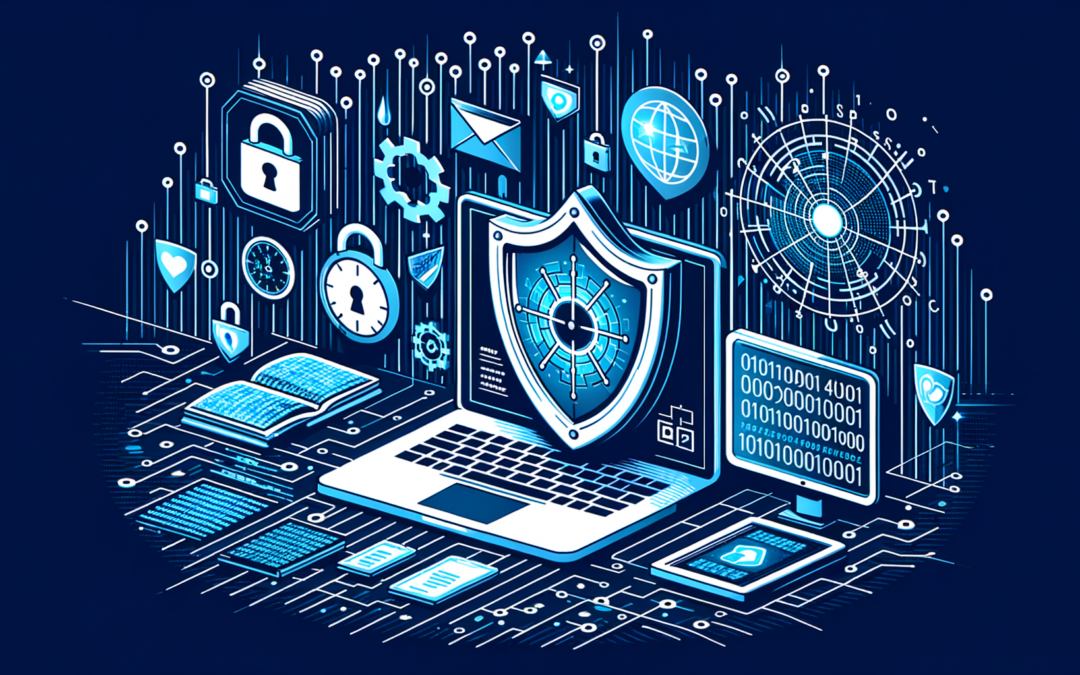Table Of Content
Break Up With Passwords: Move To Safer Methods
In today’s digitally dependent world, protecting your information is no mere trivial matter. The widespread reliance on passwords, long considered a stalwart defense, faces scrutiny like never before. This blog dives into the necessity of moving beyond traditional passwords, grounded in insights from a compelling article on cyberdefensemagazine.com.
The Downfall of Traditional Passwords
Passwords have often formed the first line of defense in securing digital resources. Despite their ubiquitous use, the weaknesses inherent in password systems have become glaringly apparent. Passwords are not merely an outdated form of security; they can become a liability. The article highlights several critical points that underline why passwords can no longer guarantee the safety of data.
- Human Error: Users often select weak, easily guessable passwords that compromise security. Despite strict policies, simple passwords like ‘123456’ remain popular, making accounts vulnerable to breaches.
- Password Breaches: Cybercriminals are continuously evolving. Methods like phishing and brute-force attacks demonstrate how easily hackers can compromise passwords, gaining unauthorized access to personal and corporate data.
- Password Fatigue: As the number of online platforms grows, so does the number of passwords that users must remember. This often results in password reuse, a significant security risk.
The very properties that have once deemed passwords useful now make them inadequate. They become the proverbial ‘weakest link’ in an otherwise robust security chain.
A New Era: Passwordless Security
With the inefficiencies of passwords laid bare, the cybersecurity industry advocates for a more secure alternative: passwordless authentication. The movement towards such solutions is not just a trend but an evolution of security measures that promise enhanced protection without the pitfalls of traditional password systems.
- Biometric Security: Fingerprint, facial recognition, and retinal scans provide a seamless and secure alternative to passwords. Biometrics are unique to each individual and offer a level of protection that traditional passwords can’t match.
- Multi-factor Authentication (MFA): Although not entirely passwordless, MFA significantly boosts security by requiring multiple forms of verification. It combines something you know (like a password) with something you have (like a smartphone) or something you are (like a fingerprint).
- Cryptographic Methods: Based on public and private key exchanges, these methods eliminate passwords by using cryptographic algorithms that secure data during transmission and access.
Adopting these new practices isn’t just about staying ahead in technology but ensuring comprehensive digital safety.
Implementing Passwordless Solutions: Challenges and Opportunities
As with any significant technological shift, transitioning to passwordless security presents both challenges and opportunities. Organizations and individuals must navigate these nuances to ensure a smooth transition. Let’s explore them further.
- Technical Integration: Implementing secure alternatives like biometric systems or cryptographic solutions involves sophisticated technological infrastructure and expertise. The initial setup can be costly and require staff training.
- User Acceptance: Despite the benefits, user resistance can hinder the adoption of passwordless systems. People are accustomed to password systems, and shifting behaviors can take time.
- Regulatory Compliance: Adhering to privacy laws and maintaining transparency about data usage, especially with biometric data, are critical as governments enforce strict regulations on data protection.
Despite these challenges, the benefits of adopting passwordless systems are immense. Enhanced security and user convenience can lead to long-term savings for businesses by reducing the risk and potential costs associated with cyber breaches.
Future Outlook: The Path Forward
As technology continues to advance, so does the need for more sophisticated cybersecurity measures. The transition to passwordless authentication is an evolutionary step forward, harboring the potential to reshape how we approach digital security. Moving forward, organizations must focus on i>future-proofing their cybersecurity strategies by embracing new, innovative forms of authentication.
- Embrace Innovations: Continuous developments in AI and machine learning will offer more advanced security solutions. Systems that learn and adapt to user behavior will enhance security while maintaining user convenience.
- Collaboration and Standards: Establishing global standards for passwordless security and fostering collaboration among cybersecurity firms, regulatory bodies, and tech companies will be vital. It ensures uniform protection levels and wide adoption of evolving technologies.
- Scalable Solutions: As companies grow, their cybersecurity needs will evolve. Investing in scalable passwordless solutions ensures adaptability to new technological landscapes without the need for frequent overhauls.
The future favors those who innovate and adapt. By embracing passwordless systems, both individuals and organizations can position themselves at the forefront of digital security.
Are you ready to move beyond traditional passwords? Jun Cyber can help you transition to advanced security systems that protect your data without the risks associated with outdated password protocols. Contact us today to learn how we can assist in safeguarding your digital assets.
Reference: Cyber Defense Magazine: Breaking Up With Your Password
Visit us at: www.juncyber.com
Schedule a consultation: Schedule a Free Consultation
Helpful Resources
- NIST Guidelines on Authentication: Provides comprehensive insights into effective authentication practices, backed by expert research.
- OWASP Top 10: Offers a list of the top vulnerabilities and guidance on mitigating them.
- SANS Institute: Detailed resources and guides on identifying and addressing the latest cybersecurity threats.



